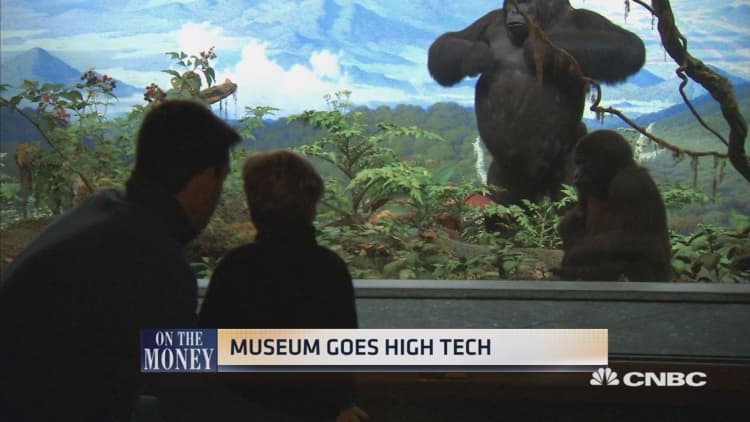
The American Museum of Natural History (AMNH) is one of New York's most famous institutions. Founded 145 years ago, moviegoers may recognize it as the setting of "Night at the Museum" and its sequels.
While the dinosaurs don't actually come alive there, the museum has recently embraced digital technology to breathe new life into its attractions, which includes a plan to construct a $325 million science center close to Central Park in New York City.
"Using technology permeates every aspect of what we do," AMNH president Ellen Futter told CNBC's "On the Money" in an interview.
Ellen Futter has been at the helm of the museum for over two decades. When she took over in the early '90s, she recognized a lot needed to be done. However, there was one project in particular that needed urgent attention.
"You know, when I first got there, I was worried about getting the museum air-conditioned," Futter said.
Since then, the museum has not only added air conditioning, but Wi-Fi throughout all the buildings, in addition to 21st century technology to million year-old artifacts. It's also attracted a lot more people, with crowds swelling from 3 million to 5 million per year.
Dinos go digital
This year the museum opened two new dinosaur exhibits. In January, the 122-foot long Titanosaur was unveiled.
Discovered in Argentina in 2014, it weighed approximately 70 tons, equal to the weight of 10 African elephants. While the skeleton on display doesn't include the real fossils — they were too heavy to mount — 3D technology enabled scientists to create digital copies, which were then 3D printed out of fiberglass.
In the "Dinosaurs Among Us" exhibition, visitors can see how some dinosaurs evolved into a variety of birds such as chickens, sparrows and pigeons. The interactive displays use video and other tech applications to show how these creatures evolved.
To enhance the visitor experience even more, the museum has launched an app called "Explorer." Available on iOS and Android, it helps visitors find their way around the daunting 1.6 million square feet of exhibits, powered by more than 700 Bluetooth beacons located around the museum.
In addition to turn-by-turn directions, the app includes customized recommendations, augmented reality experiences, as well as additional content about the exhibits.
"This is meant to allow you to create a personalized contextualized visit through the museum because it has location awareness, and then you tell it what you are interested in," added Futter.
On the education front, the museum offers many programs to children as well as educators. One of its newest programs, BridgeUP: STEM, teaches youth from underprivileged schools how to code in the context of science.
"We know these skills are going to be vital for young people to be prepared for the workforce," said Futter. "Often they learn coding but out of context, and by putting it in context of science, we're opening up worlds of opportunity for them."
A part of that effort will come in the form of a new building called the Richard Gilder Center for Science, Education and Innovation.
"One feature in it will be an invisible world's theater … we can take everyone to inside the human body and inside the brain, and to the lower depths of the ocean floor or the outer reaches of the atmosphere — very cool," said Futter.
The multimillion-dollar complex will be completed in 2020.
"On the Money" airs on CNBC Saturdays at 5:30 a.m. ET, or check listings for air times in local markets.




